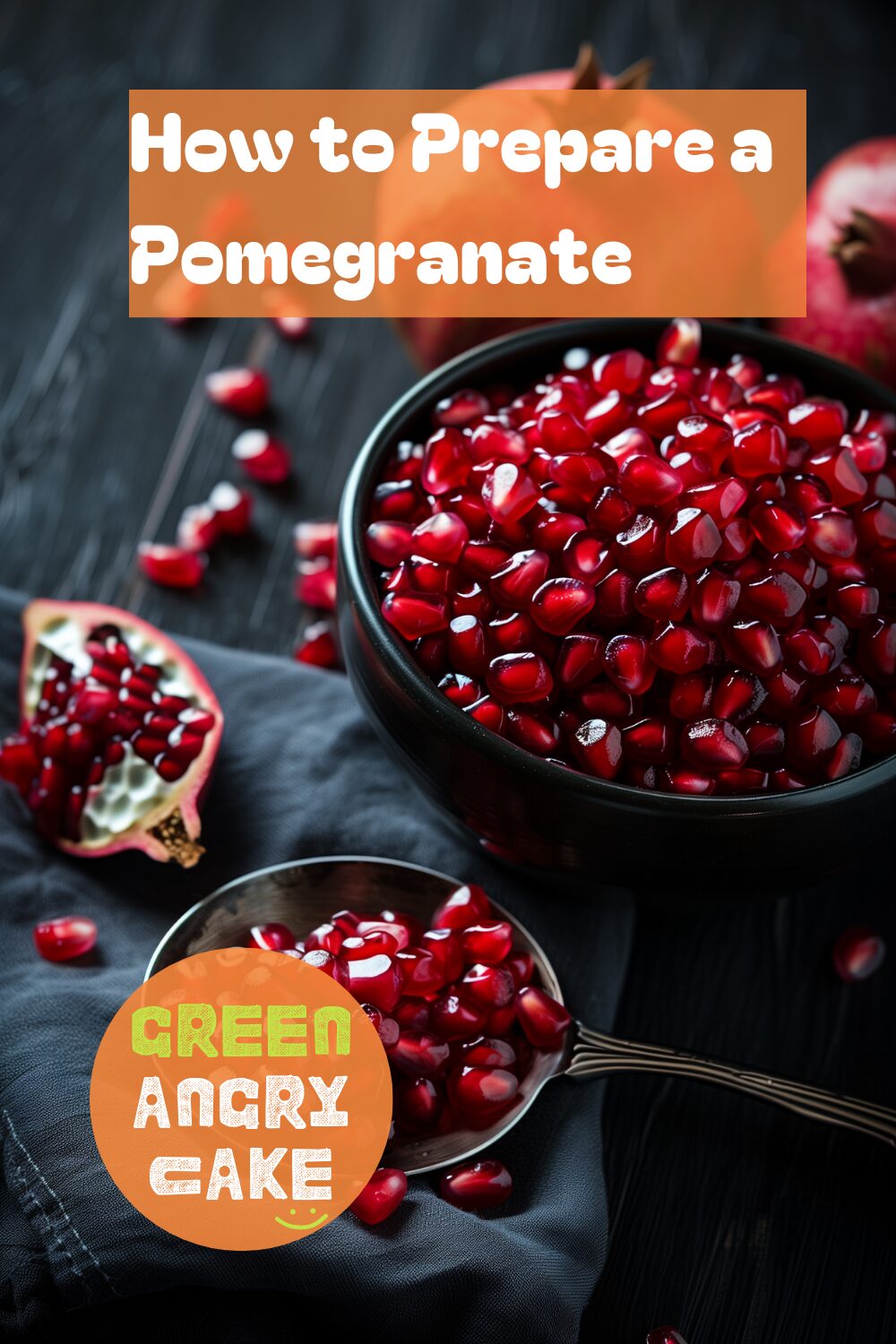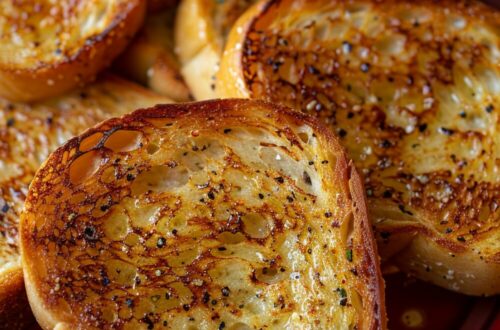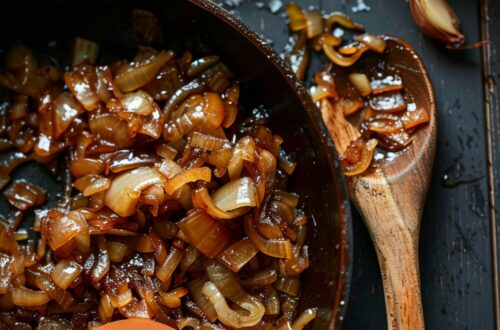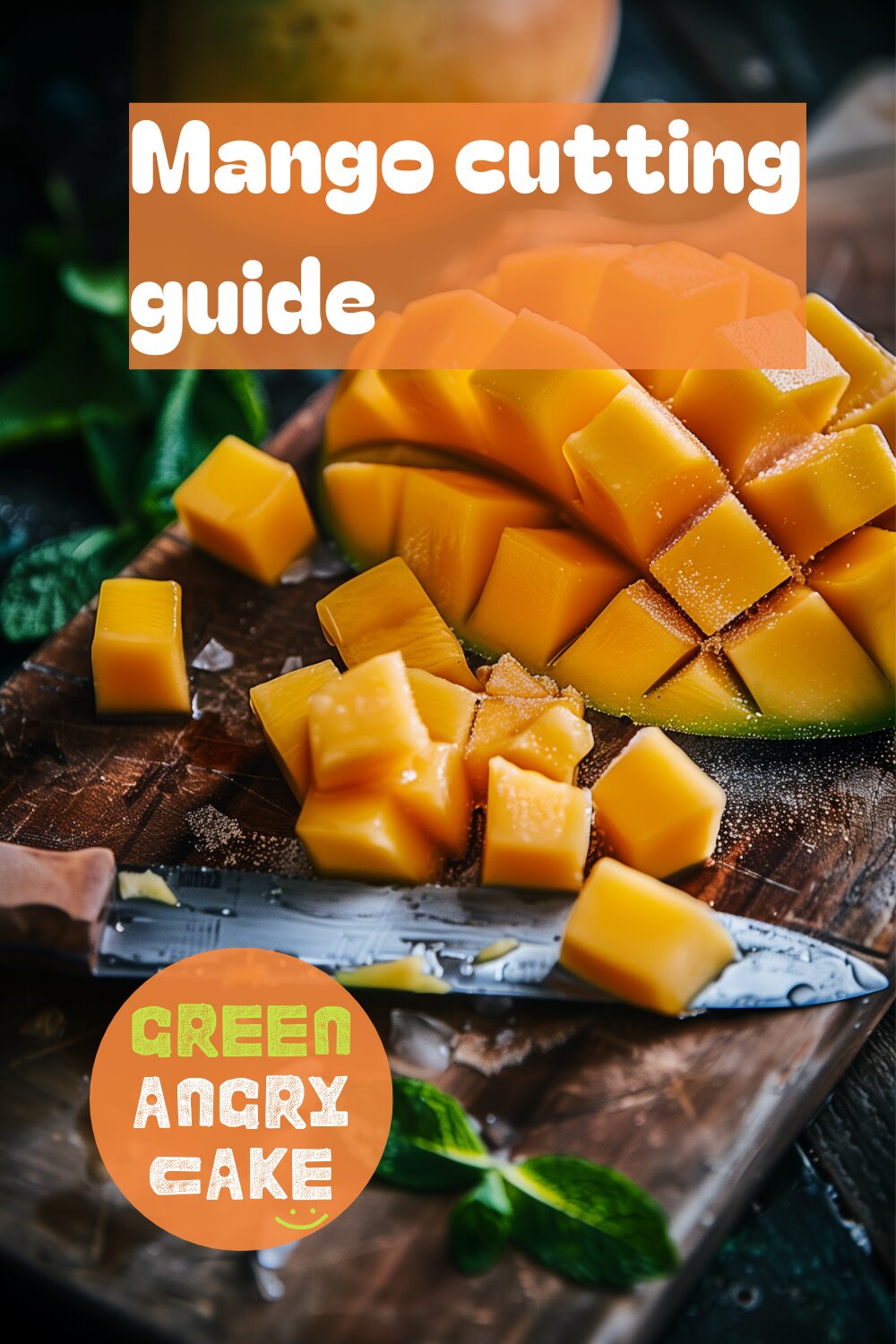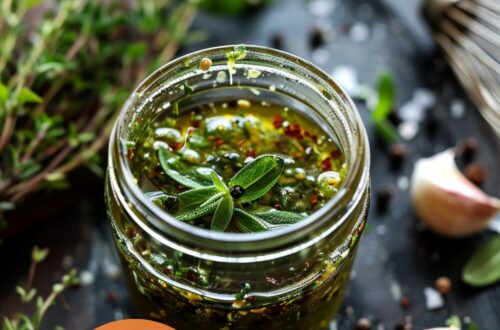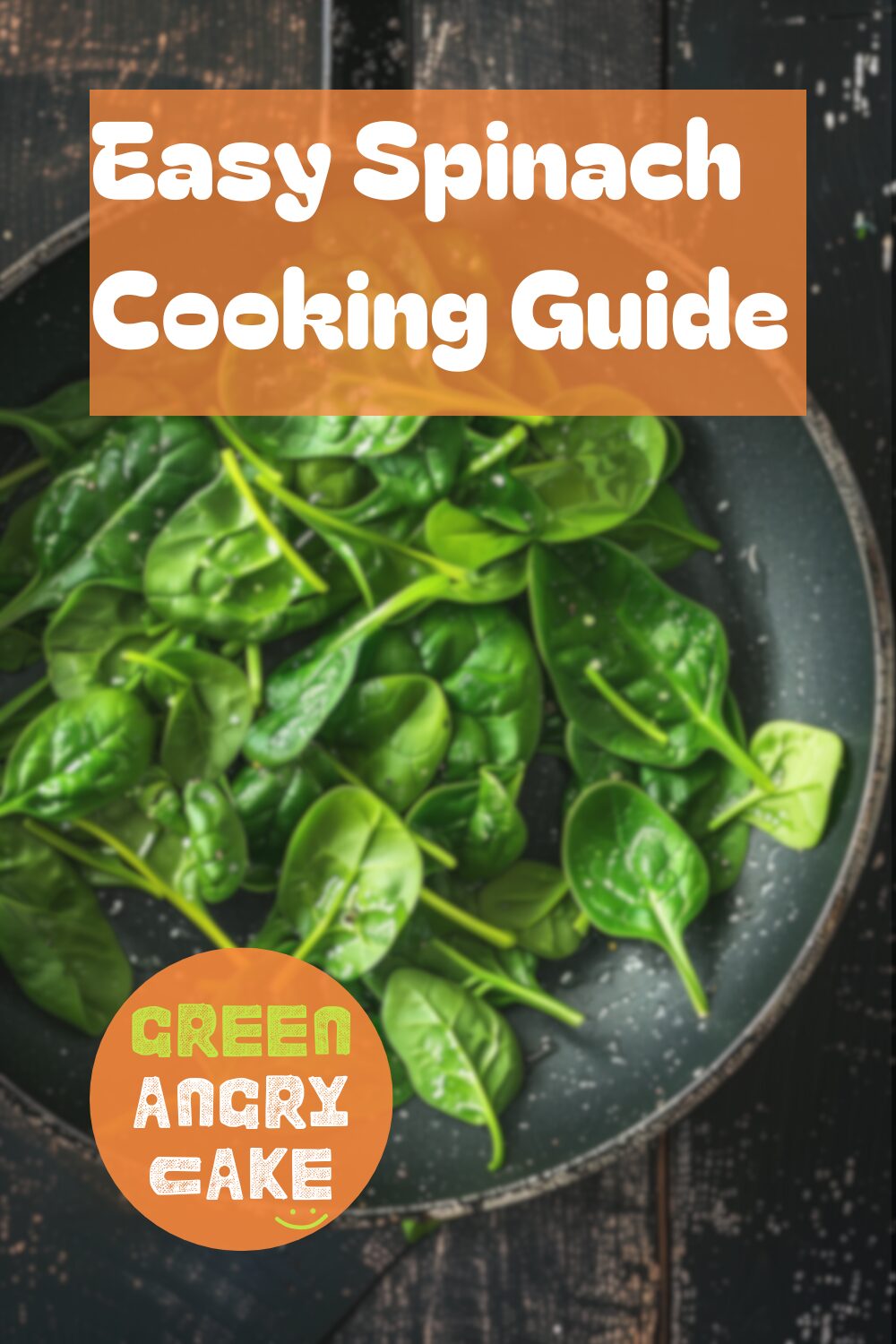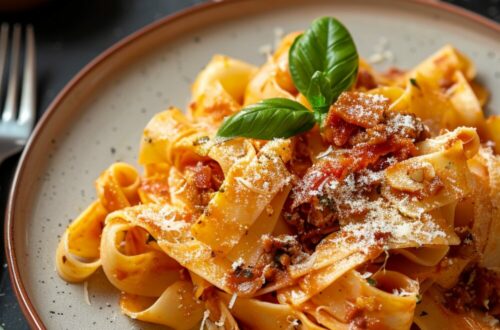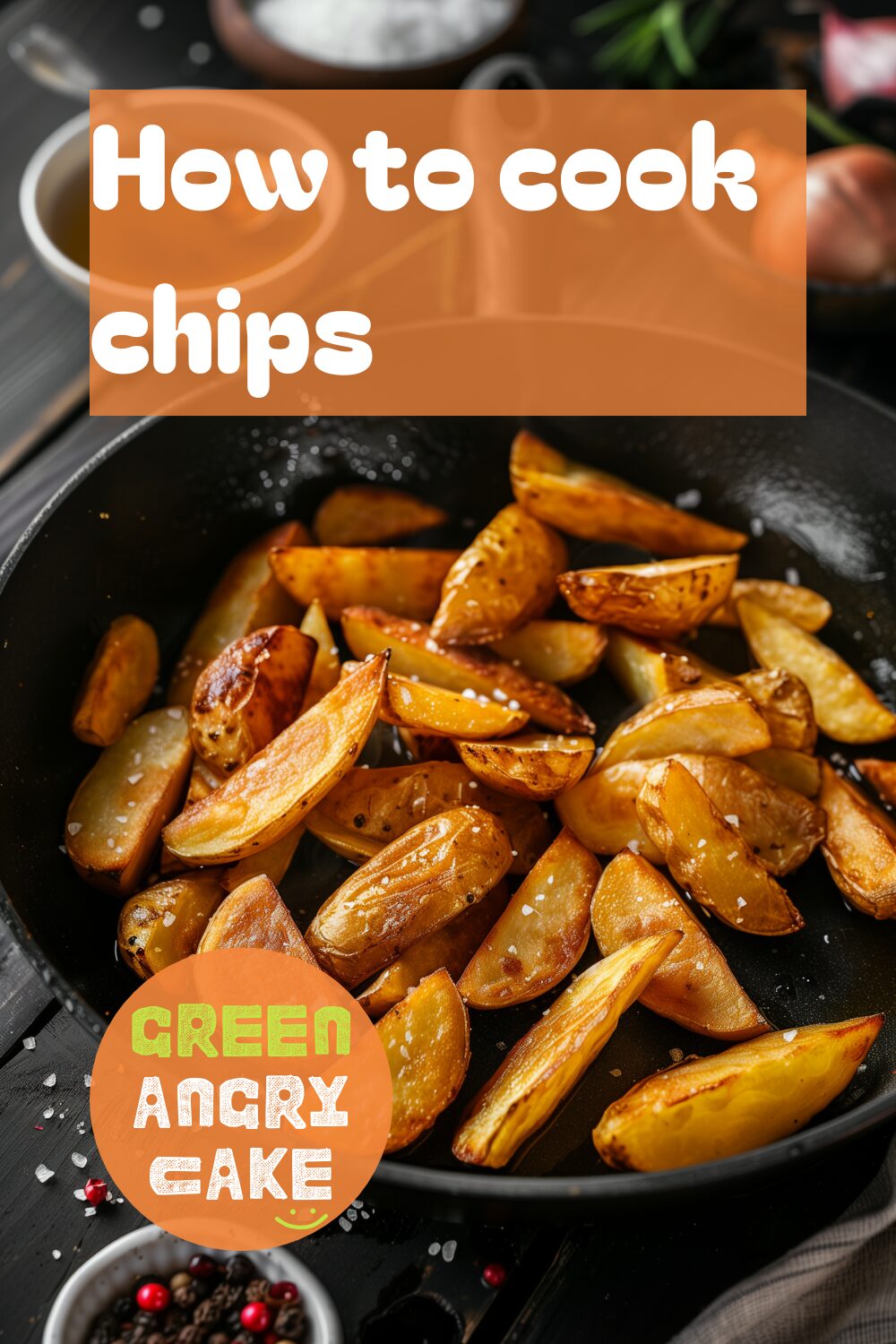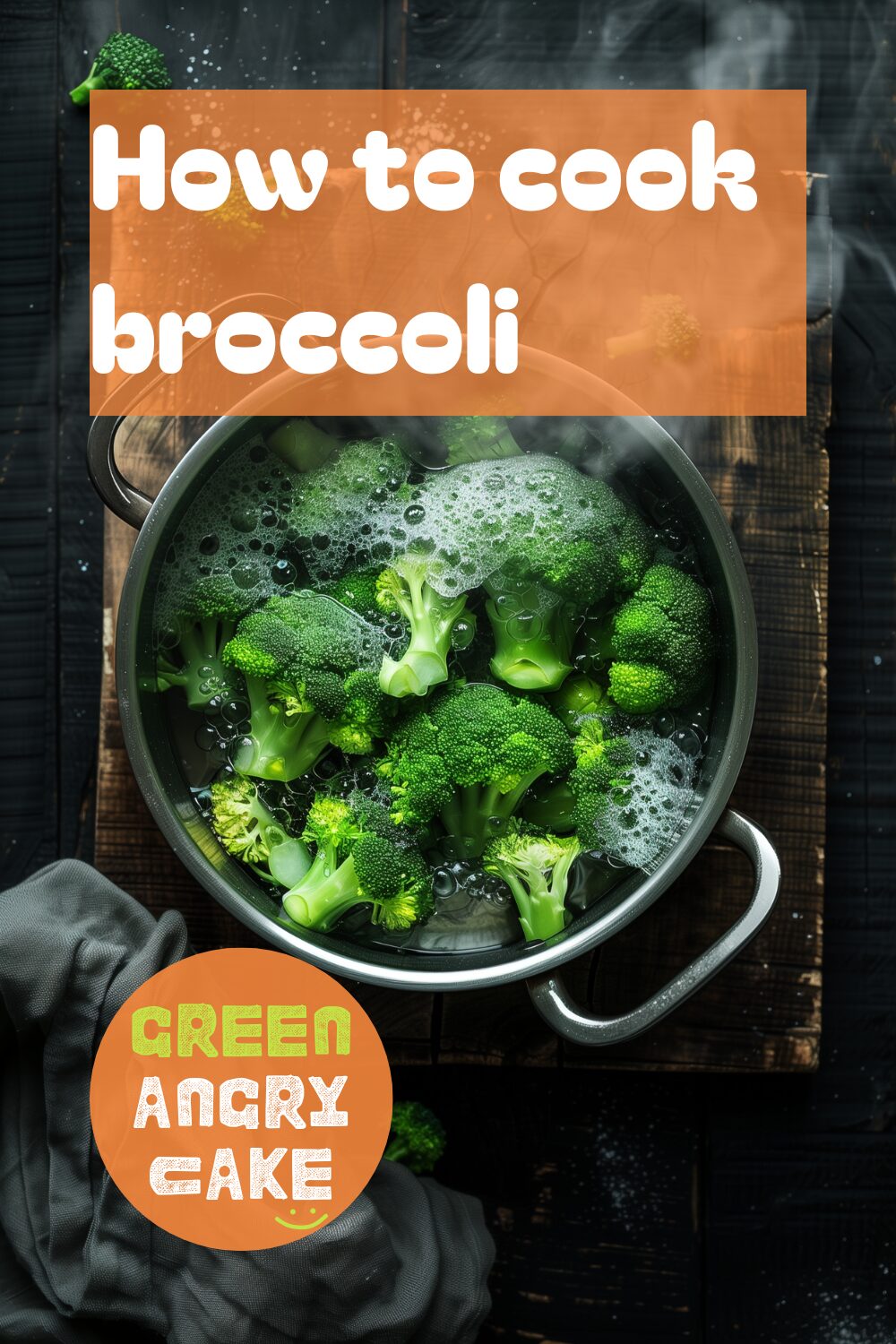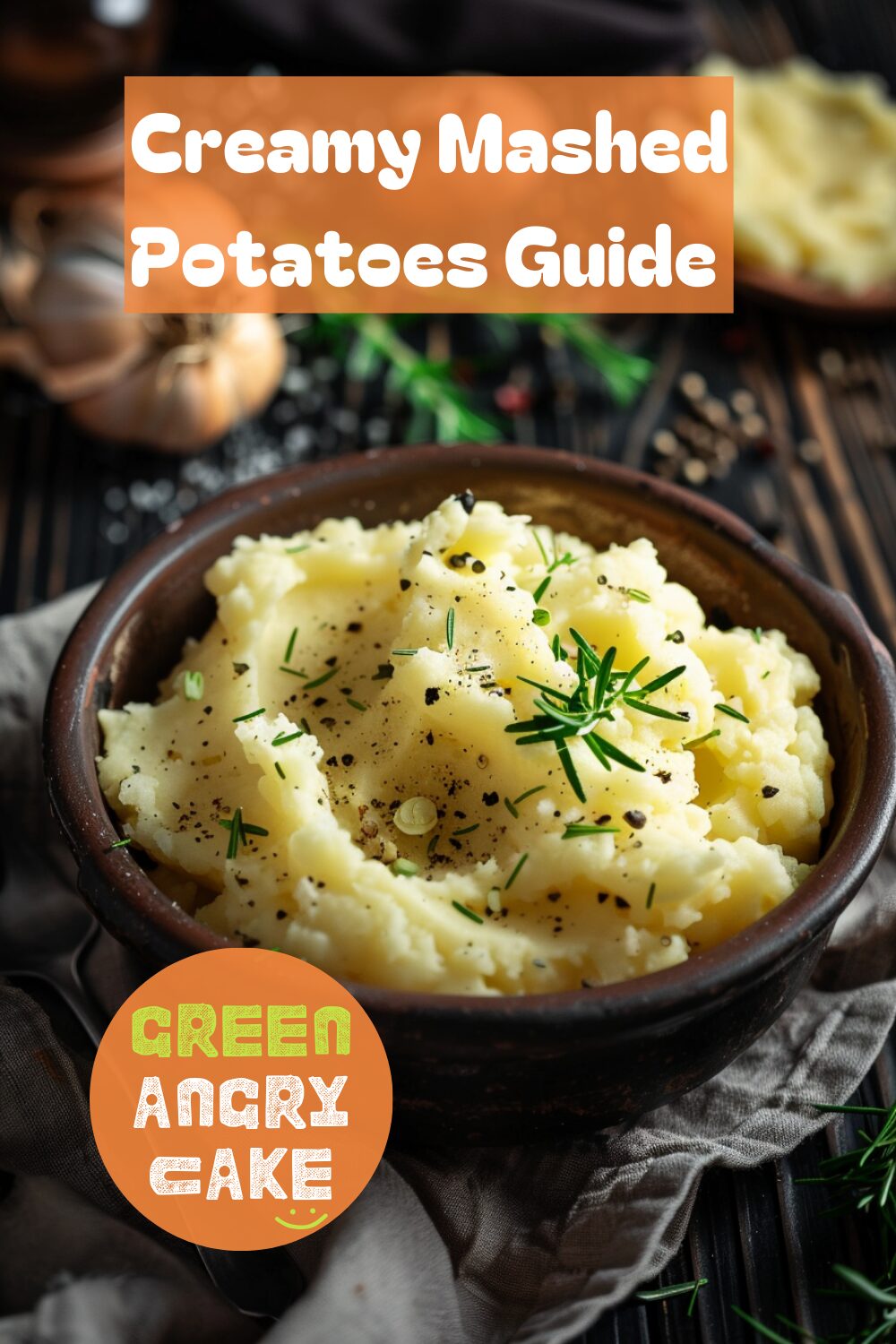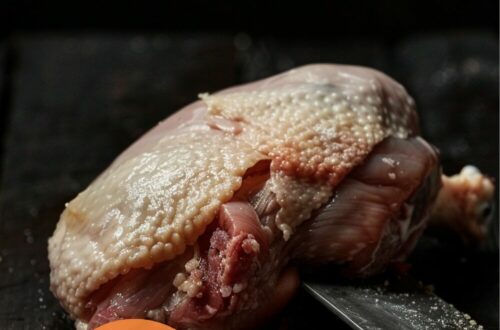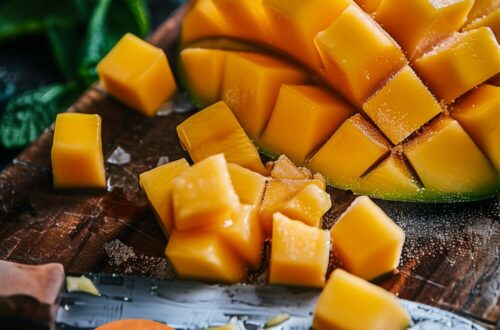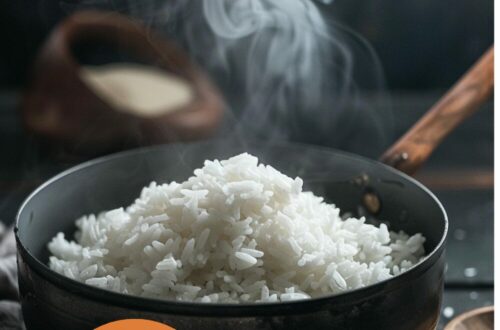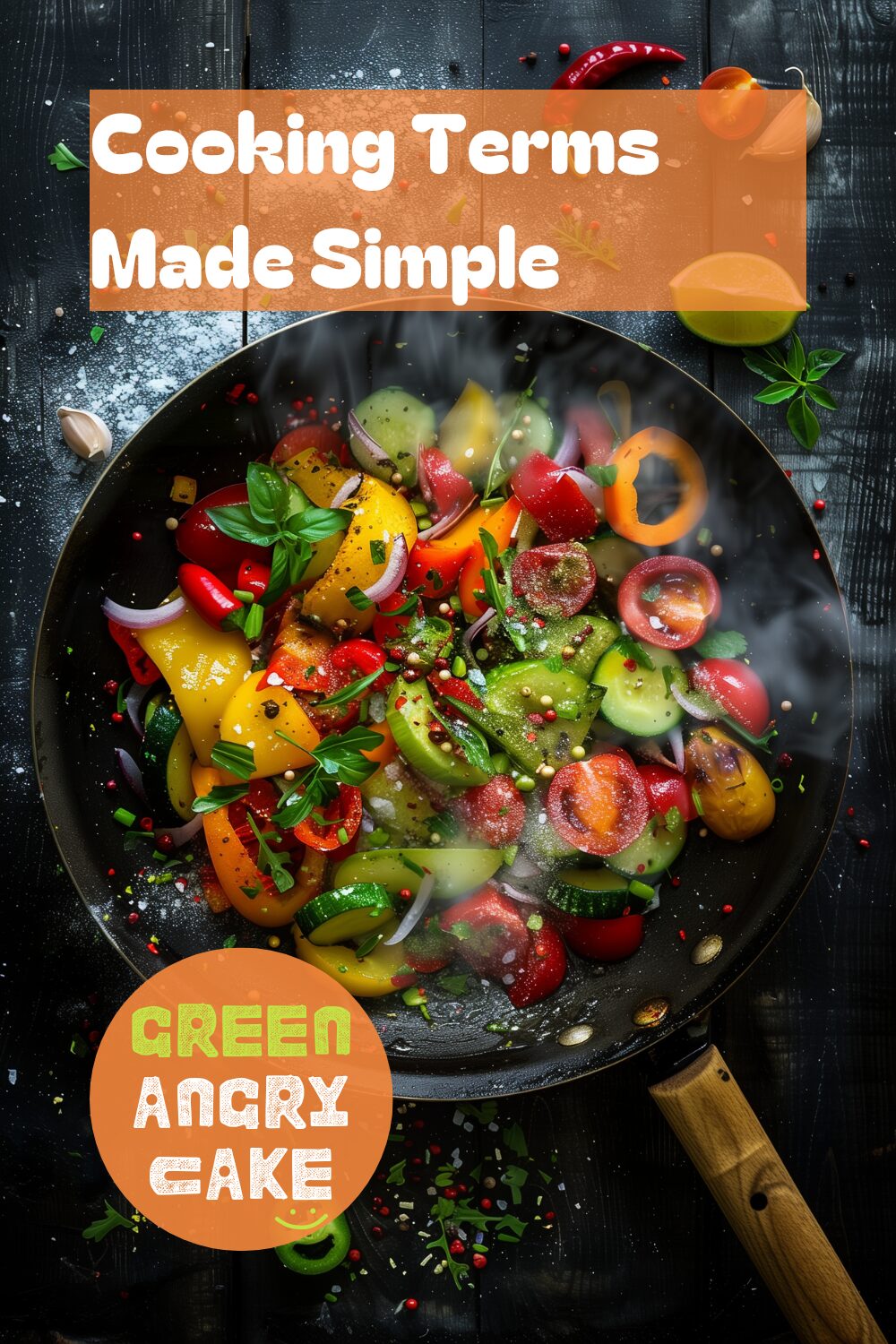Fruit & Veg Prep
Master the art of preparing fruits and vegetables with our tips and techniques. Learn easy produce prep, fresh produce preparation, and vegetable cutting techniques to enhance your meals.
-
How to Prepare a Pomegranate
Enhance your fruit preparation skills with our guide on pomegranate preparation techniques. Learn how to prepare a pomegranate perfectly using simple steps. Our step-by-step instructions ensure you get the most out of your pomegranate, whether for snacking or adding to recipes.
Equipment Needed:
- Knife
- Large bowl
- Spoon
- Toothpick (optional)
Step-by-Step Instructions for Pomegranate Preparation Techniques:
- Slice the Pomegranate: First, slice the pomegranate across the middle into halves.
- Loosen the Seeds: Next, hold one half, cut-side down, over a large bowl. Using the back of a spoon, hit the pomegranate firmly all over to loosen the seeds.
- Extract the Seeds: Squeeze the pomegranate if there are any stubborn areas. Pick through the seeds to remove any bits of white pith.
- Alternative Method: Alternatively, give a child one half of the pomegranate and a toothpick to pick out and eat the seeds. This will keep them amused for a good length of time.
Pomegranates are a delicious and nutritious fruit that can be enjoyed in many ways. Therefore, knowing how to prepare a pomegranate properly is essential to make the most of this vibrant fruit. With these pomegranate preparation techniques, you can easily enjoy pomegranate seeds in your favorite dishes or as a healthy snack.
Helpful Hint:
- For easier cleanup, perform the preparation steps over a sink or in a large bowl of water to catch any juice splatters.
Alternative Uses for Pomegranate Seeds:
- Salads: Sprinkle pomegranate seeds over salads for a burst of flavor and color.
- Smoothies: Add pomegranate seeds to your smoothies for added texture and nutrition.
- Desserts: Use pomegranate seeds as a topping for desserts like yogurt, ice cream, or cakes.
-
Mango Cutting Techniques
Enhance your fruit preparation skills with our guide on mango preparation techniques. Learn how to cut a mango perfectly using easy methods like the hedgehog and glass techniques. Our step-by-step instructions ensure you get the most out of your mango, whether for salads, smoothies, or desserts.
How to Cut Mango
Equipment Needed:
- Chopping board
- Small sharp knife
- Spoon (optional)
- Glass (optional)
Step-by-Step Instructions for Mango Preparation Techniques:
Prep the Mango: First, cut a thin slice off the bottom of the mango to create a flat side, making it easier to hold.
Slice the Mango: Next, slice vertically down the length of the mango about a quarter of an inch from the stem. If you hit the hard pit, adjust the knife slightly and slice again. Repeat on the other side to get two fleshy cheeks.
Hedgehog Technique for Mango Preparation: Then, place the mango half, skin side down, on a chopping board. Use the tip of a knife to cut a crisscross pattern into the flesh without cutting through the skin. After that, turn the halves inside out to reveal mango cubes. You can pick the cubes with your fingers or slice them off with a knife.
Glass Technique for Mango Preparation: Alternatively, hold a mango cheek and use a water glass to scoop out the flesh, getting as close to the skin as possible without breaking it. Finally, chop the mango into cubes.
Mangoes are a delicious and versatile fruit that can be enjoyed in many ways. Therefore, knowing how to cut a mango properly is essential to make the most of this tropical delight. With the hedgehog and glass techniques, you can easily prepare mango for various dishes.
Alternative Uses for Mango:
- Mango Salsa: Combine mango cubes with diced tomatoes, onions, cilantro, and lime juice for a refreshing salsa.
- Mango Smoothie: Blend mango with banana, yogurt, and a splash of orange juice for a creamy smoothie.
- Mango Chutney: Cook mango with vinegar, sugar, and spices to create a tangy chutney perfect for pairing with meats or cheeses.
Helpful Hint:
- The hedgehog technique is fun and perfect for salads, while the glass technique is great for smoothies and desserts.
-
How to Cook Spinach – Easy Spinach Cooking Guide
Enhance your vegetable preparation skills with our guide on spinach preparation techniques. Learn how to cook spinach perfectly using simple steps. Our step-by-step instructions ensure you get the most out of your spinach, whether for a side dish or as an ingredient in your favorite recipes.
Easy Spinach Cooking Guide
Equipment Needed:
- Bowl
- Colander
- Spoon
- Knife and chopping board (optional)
- Large frying pan
- Wooden spoon
- Serving dish
Step-by-Step Instructions for Spinach Preparation Techniques:
- Prep the Spinach for Easy Spinach Cooking: First, gently wash 300 g of spinach leaves in a bowl under a cold, running tap. Then, tip the spinach into a colander to drain.
- Trim the Spinach: Next, pick off any woody stem-ends from the leaves. You can use a knife and chopping board for this, but the stems are usually soft enough to tear by hand.
- Cook the Spinach: Heat a large frying pan over high heat. Add the spinach, stirring with a wooden spoon. This helps to evaporate any liquid, and the high heat will wilt the spinach quickly. Keep stirring until all the spinach has started to wilt, which should only take around 1-2 minutes. It’s important to remove the spinach from the heat as soon as it has started to wilt to avoid a soggy texture.
- Drain the Spinach: After cooking, remove the pan from the heat and transfer the spinach to a colander. Press down on the spinach with the back of a spoon to squeeze out any excess water. Finally, transfer the spinach to a serving dish and season with salt and black pepper.
Spinach is a nutritious and versatile vegetable that can be enjoyed in many dishes. Therefore, knowing how to cook spinach properly is essential to make the most of this leafy green. With these spinach preparation techniques, you can easily prepare spinach for various meals.
Helpful Hint:
- For added flavor, you can sauté garlic in the pan before adding the spinach.
Alternative Uses for Cooked Spinach:
- Spinach and Feta Omelette: Add cooked spinach to an omelette with crumbled feta cheese for a delicious breakfast.
- Spinach in Pasta: Stir cooked spinach into pasta with olive oil, garlic, and parmesan for a simple yet flavorful dish.
- Spinach and Cheese Stuffed Chicken: Use cooked spinach as a filling for stuffed chicken breasts, along with cheese and herbs.
-
Easy Chips Cooking Guide – How to Make Perfect Chips
Enhance your snack preparation skills with our guide on chips preparation techniques. Learn how to cook chips perfectly using simple steps. Our step-by-step instructions ensure you get the most out of your potatoes, whether for a snack or a side dish.
How to Cook Chips
Equipment Needed:
- Floury potatoes
- Knife
- Bowl
- Colander
- Deep, heavy-based saucepan
- Vegetable oil
- Slotted spoon
- Tea towel
- Kitchen paper
Step-by-Step Instructions for Chips Preparation Techniques:
- Prep the Potatoes for Chips: First, cut floury potatoes into chips that are about 1 cm thick. Then, soak them in a bowl of cold water. This prevents them from going brown and rinses off excess starch that could cause the chips to stick together.
- Dry the Chips: Next, drain the chips and pat them dry with a tea towel.
- Heat the Oil: Fill a deep, heavy-based saucepan no more than half full with vegetable oil. Heat the oil until a bread cube dropped into it sizzles gently. Hot oil is very dangerous, so do not leave it unattended.
- First Frying: Using a slotted spoon, lower a few chips at a time into the hot oil. Fry for about eight minutes until the chips are tender but not browned. Remove from the oil with a slotted spoon and set aside to drain on kitchen paper. You need to fry the chips twice: once to part cook them and a second time in hotter oil to give them crispiness and color.
- Second Frying: Increase the oil temperature until a bread cube dropped into the oil sizzles and browns in 20 seconds. Lower the part-cooked chips back into the oil, working in batches if necessary. Too many chips added to the pan will reduce the oil temperature and stop them from crisping. Fry them until they are crisp and golden-brown. Remove the chips with a slotted spoon and set aside to drain on kitchen paper.
- Serve the Chips: Finally, if you need to, chips can be kept warm in the oven, spread out on a tray in a single layer. Serve immediately with your favorite dipping sauce.
Chips are a classic and satisfying snack or side dish. Knowing how to cook chips properly is essential for achieving the perfect texture and flavor. With these chips preparation techniques, you can make delicious homemade chips easily.
Helpful Hint:
- Frying the chips twice gives them the perfect crispiness and color.
Alternative Uses for Cooked Chips:
- Loaded Chips: Top your chips with cheese, bacon, and green onions for a loaded chips dish.
- Chips with Aioli: Serve your chips with a homemade garlic aioli for a gourmet touch.
- Chips in a Sandwich: Add chips to a sandwich for a crunchy texture and added flavor.
-
How to Cook Broccoli
Enhance your vegetable cooking skills with our guide on broccoli preparation techniques. Learn how to cook broccoli perfectly using simple steps. Our step-by-step instructions ensure you get the most out of your broccoli, whether as a side dish or part of a main course.
Equipment Needed:
- Medium-sized, lidded saucepan
- Kitchen knife
- Chopping board
- Colander
- Serving bowl or plate
Step-by-Step Instructions for Broccoli Preparation Techniques:
- Prep the Broccoli for Cooking: First, fill a saucepan halfway with water and add a pinch of salt. This helps to soften the broccoli and keep its bright green color. Bring the water to a boil over medium heat.
- Cut the Broccoli: Meanwhile, prepare the broccoli. Cut one broccoli head into medium-sized florets. A floret should look like a tiny tree. Trim each of the floret stems to make them shorter and more even, and slice any large ones in half to make them more equal. This ensures they cook at the same rate. Save the stalk of the broccoli; it’s great for stir-fries.
- Rinse the Broccoli: Put the florets into a colander and rinse under a cold, running tap to remove any dirt. Then, gently tip them into the pan of boiling water.
- Cook the Broccoli: Turn the heat down to a simmer, cover the pan with a lid, and cook for 3–5 minutes. Test after 3 minutes by inserting a knife into a couple of the florets; you want them to be tender so the knife goes in easily but not soft or mushy.
- Drain and Steam: Once tender, carefully pour the florets back into the cleaned colander over the sink to drain. Leave the broccoli in the colander to steam for another minute before serving; this helps stop the broccoli from going soggy.
- Serve the Broccoli: Finally, transfer the cooked broccoli to a serving bowl or plate and season with salt and pepper to taste.
Broccoli is a nutritious and versatile vegetable that can be enjoyed in many dishes. Therefore, knowing how to cook broccoli properly is essential to make the most of this healthy green. With these broccoli preparation techniques, you can easily prepare broccoli for various meals.
Helpful Hint:
- For added flavor, you can drizzle the cooked broccoli with olive oil and sprinkle it with garlic powder.
Alternative Uses for Cooked Broccoli:
- Broccoli Salad: Toss cooked broccoli with cherry tomatoes, red onion, and a light vinaigrette for a refreshing salad.
- Broccoli Stir-Fry: Add cooked broccoli to a stir-fry with chicken or tofu and a savory sauce.
- Broccoli Soup: Blend cooked broccoli with vegetable broth, cream, and cheese to make a creamy broccoli soup.
-
Mashed Potato Techniques – Creamy and Delicious
Enhance your side dish skills with our guide on mashed potato techniques. Learn how to make creamy mashed potatoes perfectly using simple steps. Our step-by-step instructions ensure you get the most out of your potatoes, whether for a family dinner or a holiday feast.
Creamy Mashed Potatoes Guide
Equipment Needed:
- Board
- Peeler
- Knife
- Large pan with lid
- Small saucepan
- Colander
- Potato masher
- Wooden spoon
- Serving dish
Step-by-Step Instructions for Mashed Potato Techniques:
- Prep the Potatoes: First, wash and peel the potatoes. Then, cut them into even-sized chunks. As a guide, chop large potatoes in half, then quarters, then, if needed, halves again; chop medium-sized potatoes in half and, if needed, in quarters; and for small potatoes, just cut them in half.
- Boil the Potatoes: Next, put the potatoes in a large pan of water over high heat. Add a pinch of salt and bring to a boil. Boil for 10–15 minutes, until the potatoes are tender but still a little firm. When you can break the potatoes with a fork or cut them easily with a knife, they’re done.
- Drain and Dry: After boiling, drain the potatoes in a colander and leave them for 5 minutes to prevent the mash from getting soggy.
- Melt Butter and Milk: Meanwhile, melt a tablespoon of butter and 50ml of whole milk in a small saucepan over low heat until combined.
- Mash the Potatoes: Return the potatoes to the large pan. Then, add the melted butter and milk, and mash with a potato masher until smooth. The more you mash, the fluffier and lighter the potatoes will become. Add more milk for a creamier mash.
- Season and Serve: Finally, season with salt and pepper, then serve.
Mashed potatoes are a classic and comforting side dish that pairs well with many meals. Knowing how to make creamy mashed potatoes is essential for any home cook. Follow these mashed potato techniques to achieve the perfect creamy texture.
Helpful Hint:
- For a richer flavor, you can add a splash of cream or a few tablespoons of sour cream.
Alternative Uses for Mashed Potatoes:
- Shepherd’s Pie: Use mashed potatoes as a topping for a classic shepherd’s pie.
- Potato Cakes: Form leftover mashed potatoes into patties and fry them for a delicious potato cake.
- Loaded Mashed Potatoes: Mix in cheese, bacon, and green onions for a loaded mashed potato dish.
-
Citrus Zest Tips
Enhance your baking and cooking skills with our guide on zest preparation techniques. Learn how to zest citrus fruits perfectly using simple steps. Our step-by-step instructions ensure you get the most out of your citrus fruits, whether for baking, cooking, or garnishing.
Grating Lemon Zest
Equipment Needed:
- Grater
- Citrus fruits (lemons, oranges, limes)
- Bowl
Step-by-Step Instructions for Zest Preparation Techniques:
- Prep the Citrus Fruits for Zesting: First, wash the citrus fruits thoroughly to remove any wax or residues from the peel.
- Grate the Zest: Next, hold the citrus fruit firmly in one hand and the grater in the other. Gently rub the fruit against the fine holes of the grater, rotating the fruit as you go. Grate only the colorful outer layer, avoiding the white pith underneath, which is bitter.
- Collect the Zest: As you grate, the zest will collect on the inside of the grater. Tap the grater over a bowl to release the zest.
- Store or Use the Zest: Finally, use the zest immediately in your recipe or store it in an airtight container in the refrigerator for up to a week.
Citrus zest adds a burst of flavor and aroma to a variety of dishes. Therefore, knowing how to zest citrus fruits properly is essential for enhancing your culinary creations. With these zest preparation techniques, you can easily add a citrusy touch to your recipes.
Helpful Hint:
- For a more intense flavor, you can use a microplane grater, which produces finer zest.
Alternative Uses for Citrus Zest:
- Baked Goods: Add citrus zest to cakes, cookies, and muffins for a fresh, tangy flavor.
- Salad Dressings: Mix citrus zest into vinaigrettes and dressings for a zesty kick.
- Garnishes: Sprinkle citrus zest over finished dishes like pasta, fish, and desserts for a vibrant garnish.
-
Cooking Terms Made Simple
Step-by-Step Instructions for Understanding Cooking Terms:
- Al Dente: This term usually refers to pasta that has been cooked until just tender with some bite. Not too soft! You can cook your pasta al dente by boiling it for 1-2 minutes less than stated on the packet or recipe, but times will differ depending on the type of pasta you are cooking.
- Blanch: Blanching means cooking an ingredient very quickly in boiling water. It is commonly used for vegetables when being used cold in a salad or when it has a second cooking step, such as stir-frying. Normally, you will boil the ingredient for 1-2 minutes. Sometimes the food is then plunged into iced water to stop the cooking process. This helps retain the texture and color.
- Reduce: You will probably see or hear the word reduce in cookery when referring to a sauce. You boil or simmer the liquid until it reduces in volume as the water evaporates. The flavor becomes more concentrated, and the sauce thickens.
- Render: Rendering means to melt fat from meat over low heat. You might see this when cooking fatty cuts of meat, such as bacon.
- Sauté: Sautéing is to fry something quickly over high heat. It is quite similar to stir-frying.Simmer: Simmer means to gently boil something. You can look for little bubbles in the water, but not too many!
- Sweat: This term means to gently fry without browning. For example, you sweat finely chopped onions, carrots, and celery together until they are soft and sweet to make a sofrito, which is the base of many Italian dishes.
- Cutting In: Cutting in means to mix flour and fat, such as butter, to make a breadcrumb-like texture. This can also be referred to as rubbing in.
- Creaming: Creaming is when you beat butter and sugar together in a bowl until pale and fluffy. You will normally use a wooden spoon to cream butter and sugar, but you can also use a whisk or an electric whisk.
- Whipping to Soft Peaks: Whipping cream means using a whisk, manual or electric, to beat cream until it is thick. Whipping cream to soft peaks means when you lift the whisk, the peak left will curl over.
Understanding these common cooking terms can greatly improve your cooking skills. Knowing what these terms mean and how to apply them will make following recipes much easier and more enjoyable.
Helpful Hint:
- Keep a list of these cooking terms handy in your kitchen for quick reference while cooking.
Alternative Uses for Cooking Terms:
- Cooking Classes: Use this guide as a reference in cooking classes to help students learn common terms.
- Recipe Development: Refer to these terms when developing new recipes to ensure clear and accurate instructions.
- Culinary Education: Incorporate these terms into culinary education materials for beginner chefs.
